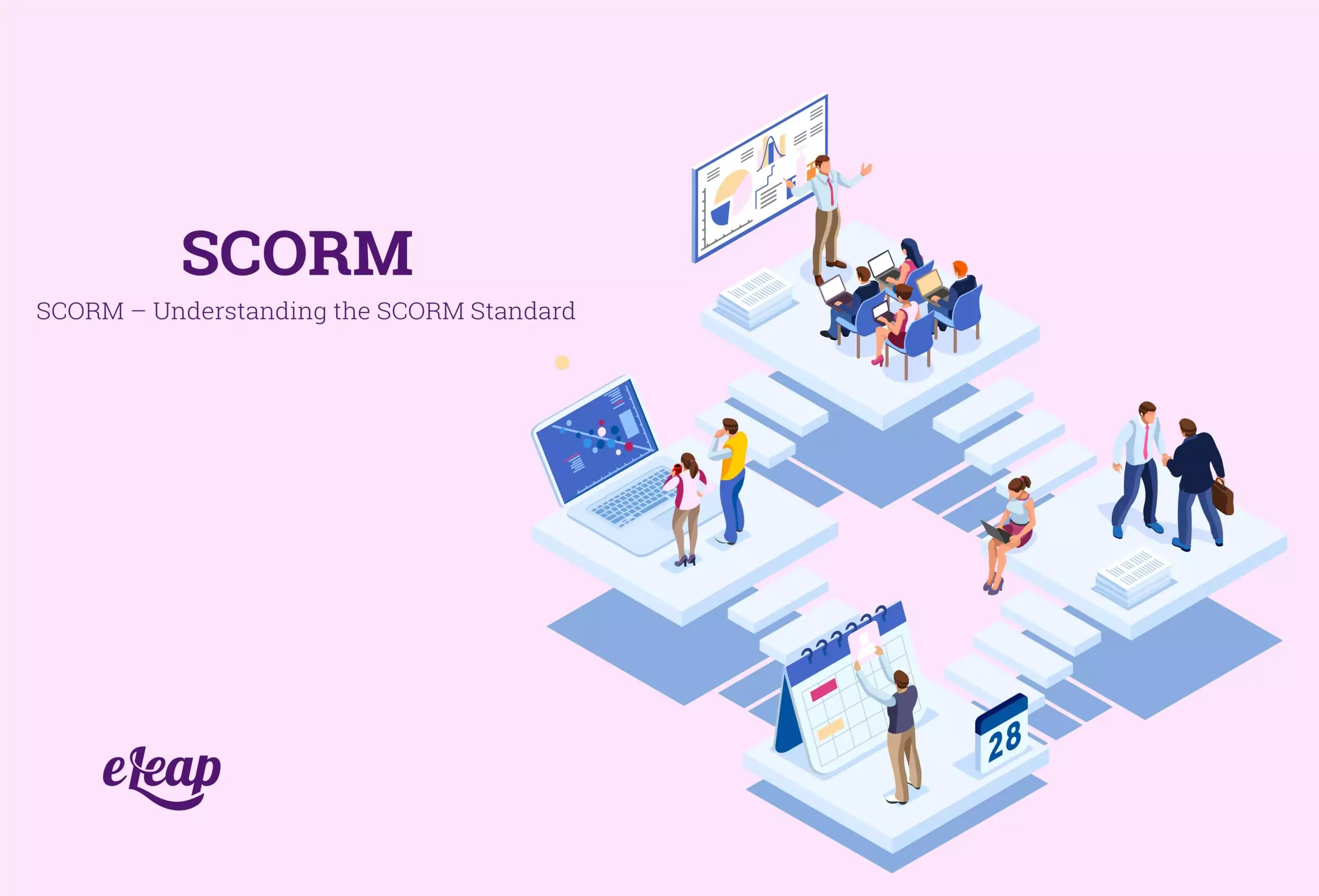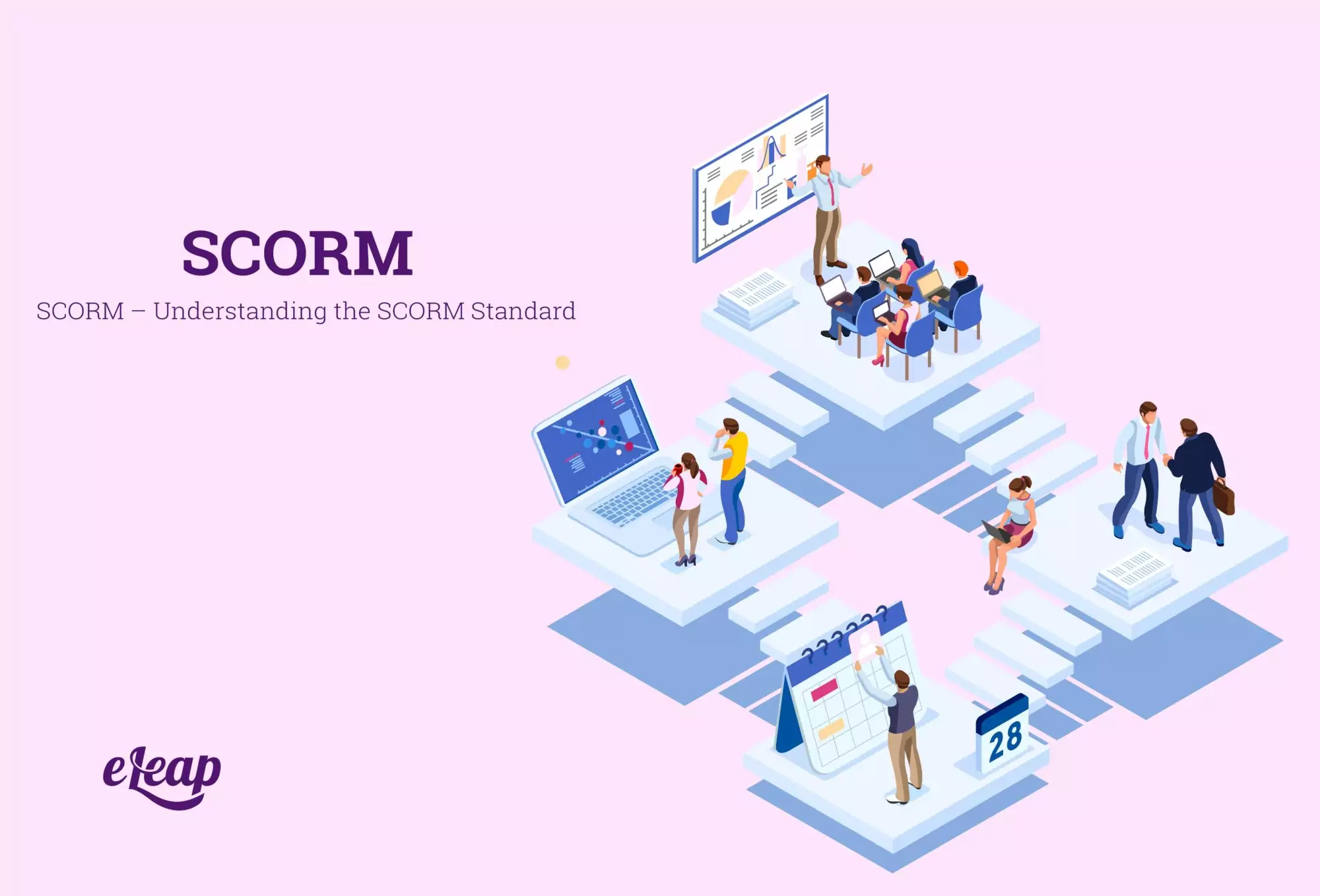SCORM
SCORM – Understanding the SCORM Standard

If you’re new to the world of eLearning, there’s a chance that you’ve come across the acronym SCORM. There’s an equally good chance that it was more than a little confusing. What is SCORM and how does it apply to your organization? What’s more, how does it affect the creation of content within your learning management system?

In this guide, we will introduce you to SCORM, including what it is, what it does, and why it is important for compliance.
What Is SCORM?
SCORM is an acronym and stands for “shareable content object reference model”. That might not mean a lot to you, but it is vital for your learning management system (LMS) and the modules/content within that system. SCORM is not just an acronym – it’s also a standard. In fact, it is the international standard for creating eLearning courses. Content published in SCORM format can be used across virtually any modern learning management system available today.
Of course, this can be a bit daunting to really understand. How does this type of design-oriented framework apply to something like eLearning and learning management systems? Let’s take something you’re no doubt familiar with – the humble USB port.
USB ports are ubiquitous across PCs and Macs, laptops, and more. They provide a way to attach accessories that can then access power from the device or send information to the device. Of course, for USBs to be useful, they have to function identically across all devices, whether you’re plugging in a flash drive on a Mac or using your PC to charge the battery on your smartphone. USB ports use a universal design that ensures operability. SCORM serves the same purpose, but for eLearning.
Breaking SCORM Down
Now that you know a bit more about what SCORM is and its purpose, let’s break it down into its constituent parts. There are two:
- Shareable Content Object – The shareable content object element of the name refers to the design elements of the eLearning package that can be reused across different learning management systems. In other words, it’s the meat of the course or module – the content and the packaging. A shareable content object should be understood by any SCORM-compliant LMS, ensuring that a module works the same in one LMS as it does in another. It’s about cross-platform functionality and continuity, as well as the ease of development for content creators.
- Reference Model – Reference model is another way to stay “rules” or “specifications”. The reference model is how the content is used within the LMS and applies to all SCORM-compliant learning management systems. Without this, there would be no way to use the same module in different systems. Each would require its own development, which would drive up the complexity, time, and cost involved with creating eLearning content.
So, you can think of SCORM as content (the shareable content object) for a learning module developed to work across multiple eLearning platforms thanks to common rules (the reference models) that must be followed.
Let’s delve just a bit deeper into things. How do you deliver eLearning courses via an LMS? This brings us to three interrelated components:
- Content Packaging – This relates to the shareable content object we just discussed. All of the learning content is added to a SCORM package. That includes the data that the LMS requires to import, launch, and run/display the content. Another way to put that is content packaging tells the LMS how to launch content, what the content is named, and how to use it.
- Run-Time Communication – Run-time communication allows the LMS and the content to exchange data. Get and set calls, then let the LMS communicate with the content package, and essentially establish the rules for communication and information sharing, such as scoring, learner name, and more.
- Sequencing – Sequencing affects how the learner interacts with and navigates through the content. Sequencing allows the user to answer questions, click buttons, choose scenarios, and so on, and then it determines what must happen before the learner can continue to the next question or scenario.
Why Use SCORM?
Finally, let’s address the elephant in the room. Why bother with SCORM in the first place? Why does it actually matter? We’ve hinted at it already, but let’s take a moment to really explore the benefits of using SCORM when creating eLearning content.
The first and most obvious benefit is compatibility. Like those USB ports we talked about, content developed in adherence with SCORM is compatible with most learning management systems out there today.
Another benefit is that it becomes possible to create higher-quality learning content, which is good news for both learners and the organizations that employ them. The best course creation tools are SCORM compliant and can be used with SCORM-compliant learning management systems.
Next, SCORM compliance is a trust mark today. That’s because the most widely adopted and highest quality LMSs are SCORM-compliant. If a content module is also compliant, it signals that the content is trustworthy and was developed to high standards.
Finally, SCORM compliance also helps reduce costs. With a single overarching framework that guides development, it takes less time and costs less to develop better content. That’s good news for content developers, organizations, and learners – a true win-win.
However, there are a few drawbacks to using SCORM that should be understood. The first is the additional expense of purchasing a SCORM authoring tool. Next, it can take time for content developers to learn how to use the framework. Finally, SCORM is an older framework, so it may not be as agile as some would prefer.
There is also the fact that not all SCORM-compliant learning management systems are the same. SCORM-compliance just ensures that content can be used across different platforms. It has nothing to do with the features, ease of use, and functionality of the various systems on the market.
The Takeaway
SCORM is an important framework that ensures the interoperability of eLearning content across different platforms. It is an important tool for ensuring quality, compatibility, and cost reduction. However, it is only one part of choosing an LMS. Other considerations should include features, ease of use, support, UI design, and more.